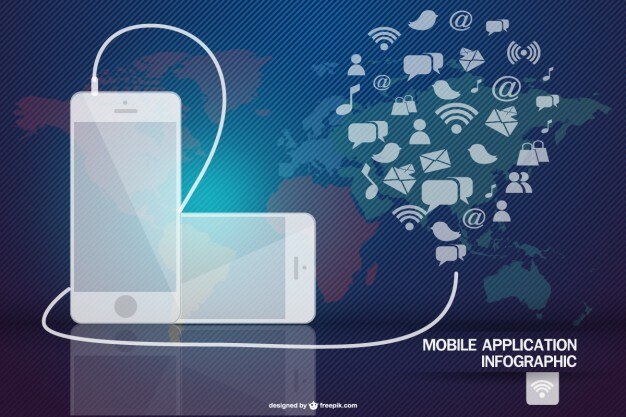Telephones The Essential Backup When the Internet Goes Down
Telephones: The Essential Backup When the Internet Goes Down - Discover the importance of traditional communication tools in maintaining connectivity during digital disruptions.

- Anthony Arphan
- 8 min read

In our modern world, connectivity plays a crucial role in our daily lives. Despite the advancements in digital technology, there are moments when our usual means of communication falter. During these instances, it becomes essential to have an alternative way to stay connected and ensure that vital conversations can continue without interruption.
Traditional voice devices serve as a dependable solution during these times. They offer a way to maintain communication lines open, even when other systems are not functioning. Whether it’s a power outage, technical glitch, or any other unforeseen issue, these devices provide a necessary lifeline.
Understanding the value of these classic communication tools can help us better prepare for unexpected events. By relying on established technologies, we can navigate challenges more effectively and maintain our connections, regardless of the circumstances. Let’s delve deeper into how these tools support us and ensure our ability to communicate in any situation.
Telephones: A Reliable Communication Tool
Modern society heavily relies on various forms of digital connectivity. However, there are moments when traditional methods become invaluable. One such method remains steadfast, ensuring continuous interaction without the need for advanced technology. This tool, often overlooked in the digital age, plays a crucial role in maintaining seamless communication during disruptions.
Unwavering Dependability
Unlike more contemporary means of connectivity, this method provides an unparalleled level of reliability. Its infrastructure is less susceptible to common issues that plague newer systems. Consequently, it stands as a robust solution during emergencies, allowing individuals to stay in touch effortlessly.
Accessible and User-Friendly
Another significant advantage lies in its simplicity and widespread availability. This communication medium is easy to use, making it accessible to a broad audience, including those who may not be tech-savvy. Its user-friendly nature ensures that everyone, regardless of their technical expertise, can maintain contact during critical times.
In summary, this time-tested communication tool continues to prove its worth, offering a dependable and accessible option for staying connected, especially when other technologies fail. Its role in our daily lives, particularly during unforeseen circumstances, cannot be overstated.
Advantages of Landlines During Outages
Modern communication systems have evolved significantly, yet traditional wired connections maintain certain benefits, especially during service interruptions. These reliable networks offer unique advantages that are often overlooked in our wireless world.
One of the primary strengths of landlines is their independence from electrical power. While mobile networks and other digital communication platforms often rely on power sources that can fail during emergencies, landlines continue to function. This reliability can be crucial in critical situations where maintaining contact is vital.
Moreover, landlines provide superior voice quality compared to many wireless alternatives. This clarity ensures effective communication, reducing misunderstandings and enhancing the accuracy of conveyed information. For businesses, this can mean the difference between seamless operations and costly disruptions.
Another key advantage is their robustness against cyber threats. Without relying on the same vulnerabilities that affect digital systems, landlines offer a more secure method of communication. This added layer of security can be invaluable for sensitive conversations and data exchanges.
Here is a comparison of the key benefits:
| Benefit | Details |
|---|---|
| Power Independence | Continues to operate without reliance on external power sources. |
| Superior Voice Quality | Provides clearer audio, enhancing communication effectiveness. |
| Enhanced Security | Less vulnerable to cyber attacks and digital threats. |
In summary, while new communication technologies offer convenience and mobility, the steadfast reliability of traditional wired connections remains a critical asset during periods of disruption.
Comparing Mobile Networks to Wi-Fi
Exploring differences between mobile networks and Wi-Fi helps understand how they cater to diverse connectivity needs. Each technology offers unique advantages, influencing user experience and accessibility.
- Coverage and Availability: Mobile networks provide extensive coverage, often accessible in remote areas. Wi-Fi relies on fixed infrastructure, limiting its range to specific locations such as homes or public hotspots.
- Speed and Performance: Wi-Fi generally offers higher speeds, especially with modern fiber-optic connections. Mobile networks, while improving with advancements like 5G, may still experience variability in speed based on location and network congestion.
- Cost Implications: Wi-Fi is often more cost-effective for heavy data usage, as many plans come with unlimited data. Mobile networks typically charge based on data consumption, which can become expensive without an unlimited plan.
- Security Considerations: Wi-Fi networks, especially public ones, can be vulnerable to security breaches if not properly secured. Mobile networks offer a higher level of security by default, as data transmission occurs over encrypted channels.
- Mobility and Convenience: Mobile networks excel in providing connectivity on-the-go, enabling continuous access while traveling. Wi-Fi requires proximity to a router, making it less flexible for mobile use.
Understanding these aspects helps users choose appropriate connectivity solutions for their specific needs, balancing speed, cost, security, and convenience.
Emergency Services Accessibility
In times of crisis, reliable communication channels are crucial for ensuring swift access to emergency assistance. Effective contact methods can make a significant difference, enabling individuals to promptly reach out for help and receive timely support.
Critical Importance of Uninterrupted Communication
Maintaining consistent and dependable communication avenues is vital for public safety. Emergency responders rely on these systems to coordinate their efforts and provide necessary aid. Any disruption in communication can hinder the efficiency of emergency services, leading to potentially life-threatening delays.
Alternative Solutions in Crisis Situations
Various methods of communication serve as vital alternatives during emergencies. Ensuring multiple channels are available for reaching out to emergency services is a key strategy in disaster preparedness. This redundancy helps mitigate risks associated with communication failures.
Ensuring Public Awareness
Public education on the availability and usage of alternative communication methods is essential. Awareness campaigns and training sessions can equip citizens with the knowledge they need to effectively utilize these channels during critical moments.
Technological Innovations and Future Prospects
Advancements in technology continue to enhance the reliability and accessibility of emergency communication systems. Ongoing innovations aim to create more resilient and efficient networks, ensuring that help is always within reach, regardless of circumstances.
Maintaining Connectivity Without Internet
Staying connected during times when online access is unavailable can be crucial. There are various traditional and modern methods to ensure communication remains uninterrupted, allowing individuals to stay in touch and informed.
Different technologies and strategies can be employed to maintain connectivity, providing reliable alternatives. This section explores practical solutions for sustaining communication and accessing information when digital services are out of reach.
| Method | Description | Advantages |
|---|---|---|
| Radio Communication | Utilizing radio waves to transmit information over long distances. | Wide coverage, reliable in emergencies, no reliance on digital networks. |
| Satellite Phones | Devices that connect directly to satellites, providing global coverage. | Global reach, independent of local infrastructure. |
| Walkie-Talkies | Handheld transceivers that operate on radio frequencies for short-range communication. | Immediate communication, durable, easy to use. |
| Physical Messengers | Using couriers or postal services to deliver messages. | Dependable for important documents, not affected by digital outages. |
| Printed Media | Newspapers, newsletters, and bulletins providing updates and information. | Accessible, can reach a wide audience, tangible format. |
Using Phones for Vital Updates
In times of connectivity disruptions, relying on alternative communication channels becomes crucial for ensuring continuous information flow. This section explores the indispensable role of mobile devices in disseminating critical updates when traditional internet services are unavailable.
Reliability in Communication

Mobile phones serve as reliable tools for conveying urgent information without dependency on online networks. Their resilience during outages underscores their value as dependable communication lifelines.
During unforeseen interruptions to digital connectivity, the agility of smartphones and cellular networks emerges prominently. They facilitate timely dissemination of essential updates, ensuring continuity in communication when conventional internet access is compromised.
Staying Connected with Loved Ones
In times of digital disruption or loss of online connectivity, maintaining communication with family and friends becomes pivotal. This section explores alternative means to stay in touch when the usual methods are unavailable.
Utilizing Traditional Communication Channels
When faced with network outages or technological challenges, resorting to conventional communication tools becomes indispensable. Embracing analog methods such as landline telephones and handwritten letters ensures uninterrupted connectivity.
By relying on established forms of communication, individuals can preserve familial bonds and interpersonal relationships even amidst digital uncertainty. Emphasizing the resilience of traditional means fosters a sense of security and continuity in staying connected.
Alternative Communication Methods
In situations where connectivity falters and online access becomes uncertain, exploring diverse means of interaction remains pivotal. This section delves into alternative pathways for staying connected and exchanging information beyond traditional digital frameworks. Amidst challenges posed by connectivity disruptions, viable alternatives emerge, ensuring continuity in communication channels and maintaining the flow of essential communications.
Preparing for Potential Internet Disruptions
In the face of unforeseen interruptions to our online connections, it becomes paramount to establish reliable contingency plans. Anticipating instances where digital connectivity might falter necessitates strategic measures to maintain communication and access to essential services. This guide outlines proactive steps to mitigate the impact of such events, ensuring continuity in both personal and professional spheres.
- Develop a comprehensive communication strategy encompassing alternative methods such as telephony.
- Ensure redundancy in critical services by diversifying connectivity options.
- Equip yourself with essential offline resources to sustain productivity and connectivity.
- Establish clear protocols for transitioning to backup systems seamlessly.
By adopting these proactive measures, individuals and organizations can minimize disruption and maintain operational efficiency during unforeseen digital outages.